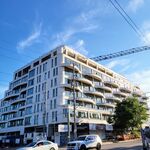taal
Senior Member
A lot of the head office jobs will remain downtown for that reason, but a lot of the back office stuff will continue to leave downtown I'm sure
I actually don't think this is the case ... we haven't seen this yet, sure it's happened to a certain degree but not by far and large.
A lot of business companies have their IT (not necessarily infrastructure) but staff downtown. I mean what exactly is a 'head office job' anyway, it's probably very limited. That's not the trend, particularly lately where more and more people want to live downtown.
Anyway the point is, when a company does want to leave, it's the 905, not the 416. Maybe it's for the reason you state above i.e. the wealth of the residents in the business districts; Which out of the core and on Yonge in Toronto is probably fairly low.
So what sort of job should Toronto be trying to attract to the waterfront developments ? Saying communication / media is really saying lets steel them from King West. Ideally new jobs can be created (or taken from the surronding regions).
Great example, target, they came to Canada, where did they set up their headquarters ? Airport area.




